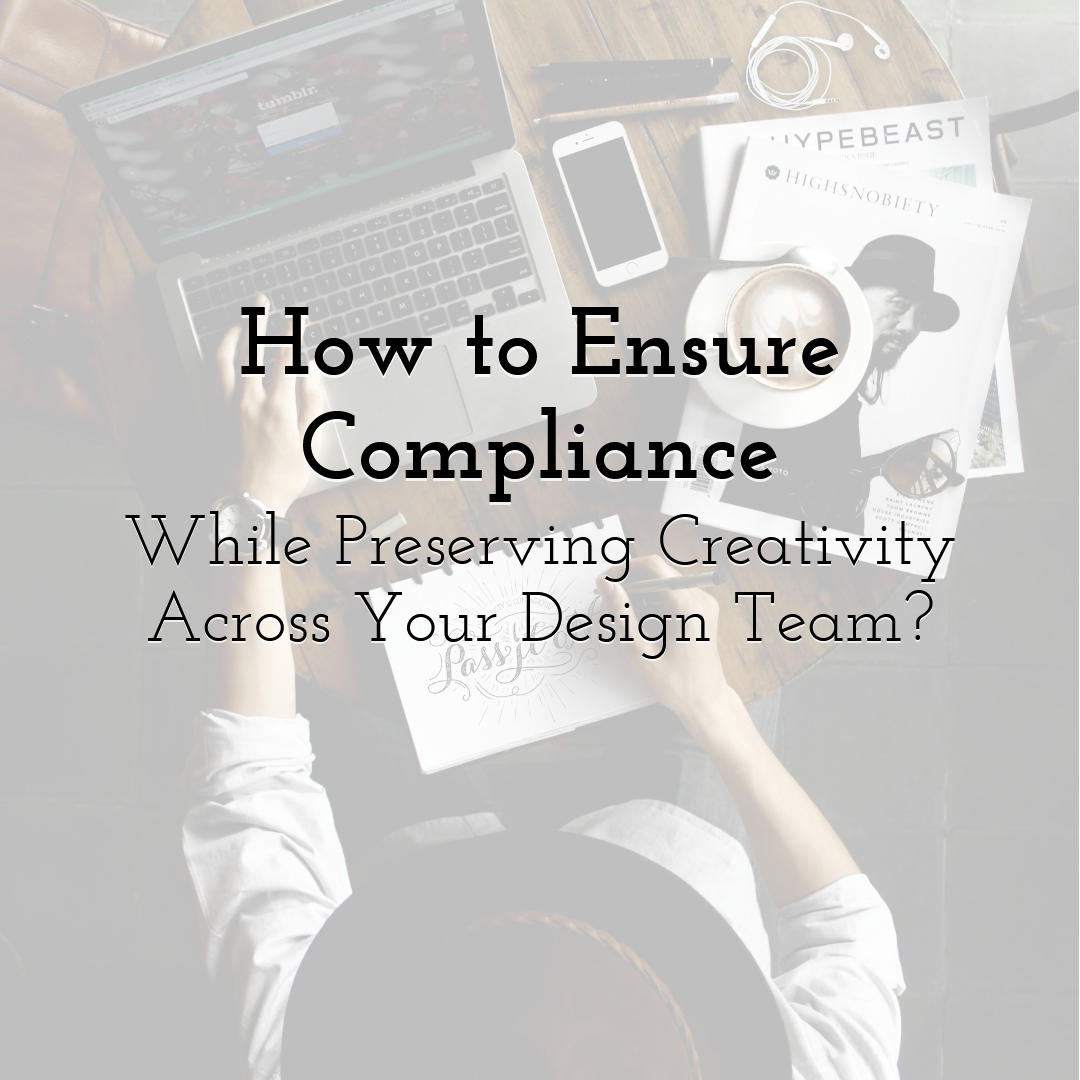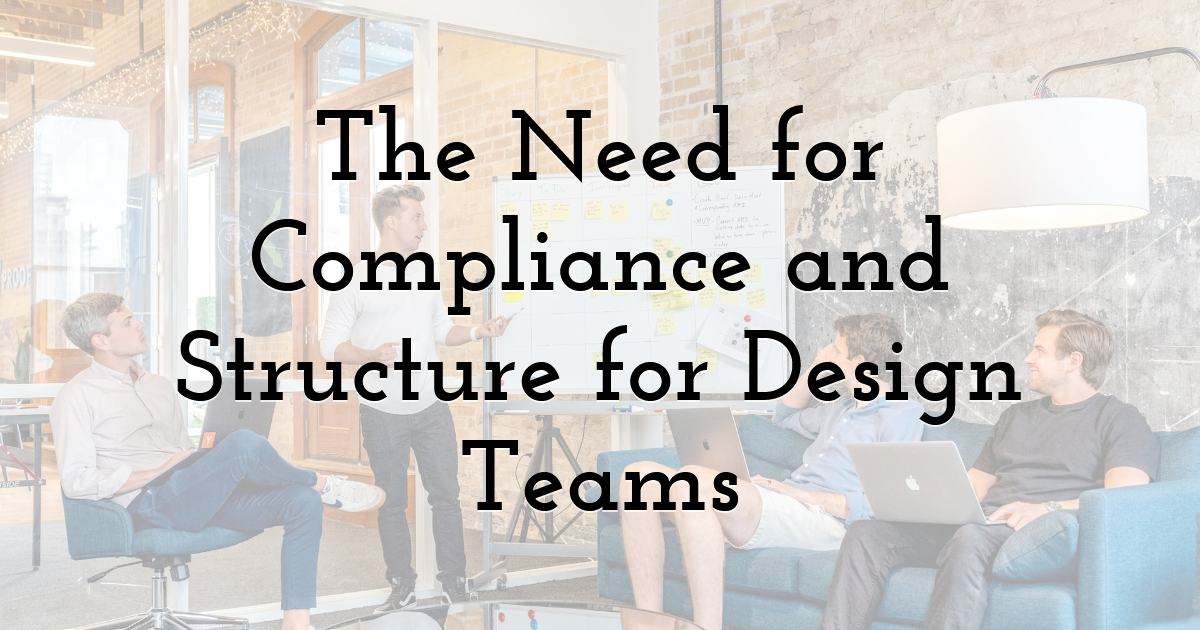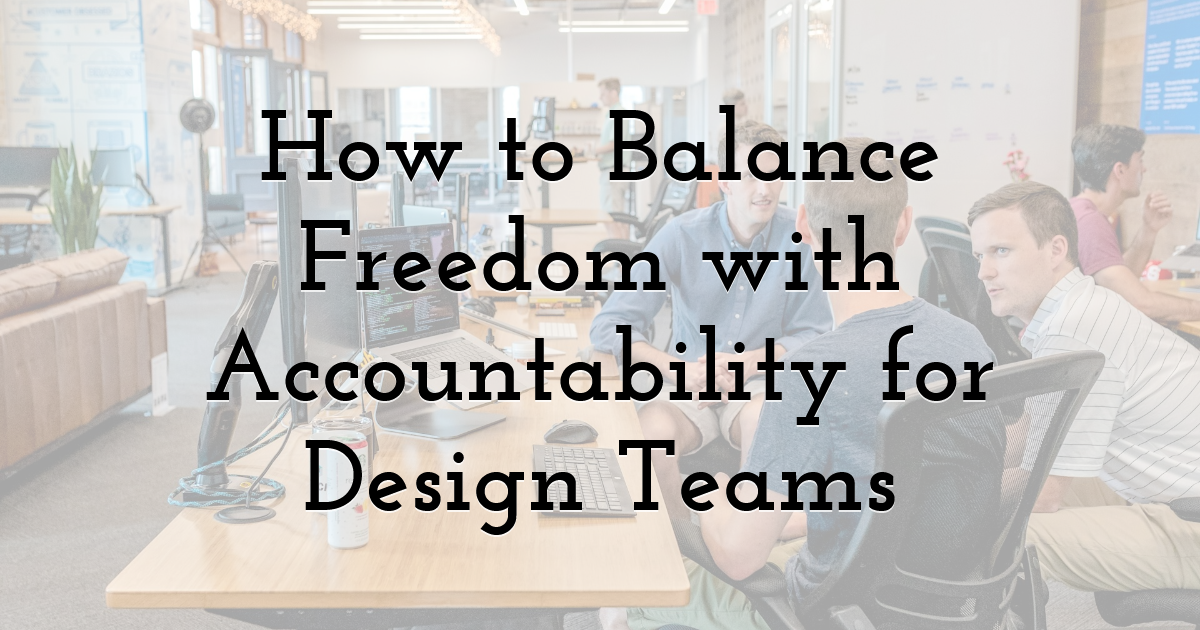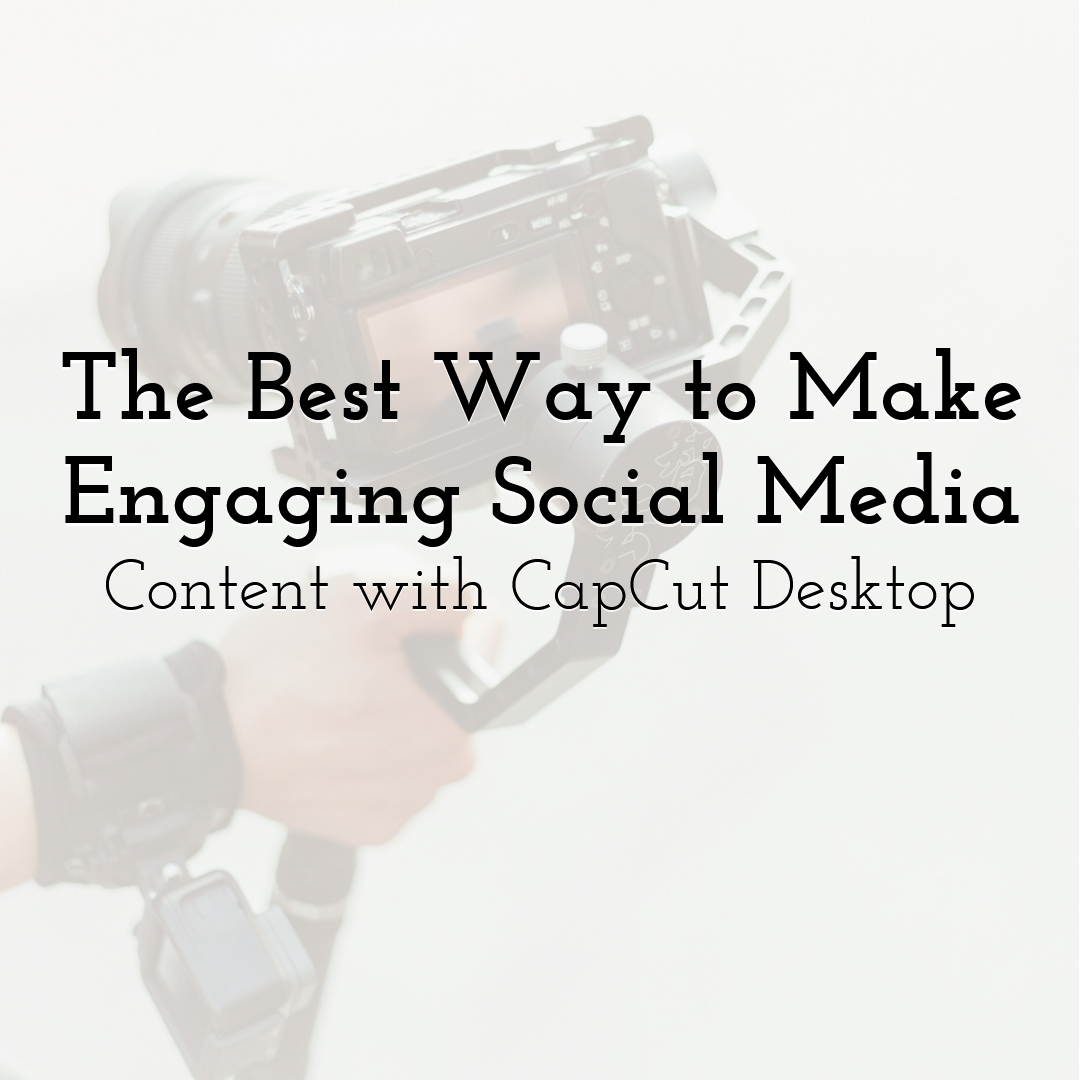How to Ensure Compliance While Preserving Creativity Across Your Design Team?

Boundless creativity and heads pinned together to come up with innovative ideas is a very mundane and regular concept for design teams. They are people who start with an empty page and turn it into art. But with no structure to rely on, brainstorming sessions can quickly turn into unnecessary chatter and significant delays in the name of creative blocks.
However, should a single lazy artist be a good enough reason to micromanage? No, this is only the other end of the spectrum. While unlimited freedom risks inefficiencies, micromanagement can choke inspiration. To acknowledge both sides and to let them coexist is a sensible way to go about this.
Continue reading to understand why compliance is a must for design teams and how one can ensure it.
Understanding the Creative Process

Flexibility is the holy grail for designers since it fuels their creativity. When rules are easily changeable, designers are more open to exploring new ideas and experimenting.
This experimentation eventually increases their chance of coming up with a valuable idea. Not only that, but designers are also more willing to run the extra mile for their designs and projects since the autonomy given to them builds ownership. In such cases, rather than merely going through the steps for procedural reasons, they immerse themselves in the brainstorming, prototyping, and then final drafting stages.
75% of designers feel pressured to focus on output instead of creativity. You don’t want that, but you also don’t want work in your organization to be unstructured.
When freedom is bestowed on employees without boundaries, it can end in missed deadlines and duplicated or wasted efforts. Moreover, approvals can get delayed, and before you know it, the project can derail, with non-compliance becoming a core concern.
Now, what must one do? Guardrails, i.e, offer autonomy within predetermined limits. By doing so, you will not be undermining your team's creativity while also preserving both your reputation and company culture.
The Need for Compliance and Structure for Design Teams

Proper policies and systems put in place for accountability enable design teams to not only deliver work efficiently but also ensure consistent outcomes. Take, for example, policies for asset licensing, data handling, accessibility, and brand usage.
If these policies are clearly communicated to the team, they will not need unnecessary meetings or take guesses to get their work done. Instead, everything communicated through the policies will act like a guiding light for them and eradicate uncertainty.
This is, however, not only about fewer meetings but ultimately also about speedy delivery and prevention of costly reworks. But policies alone cannot suffice. Using effective systems that turn policies into daily practice must also be a part of your team management plan.
However, through it all, you must not lose sight of your purpose. For compliance, you are only aiming for risk management, not creative suppression. Therefore, the rules you set in place must be thoughtful and built to protect the organization from operational breakdowns and financial consequences.
All in all, what will benefit you in the long run is a risk-based approach, i.e., lightweight rules where the risks are low, while stricter controls for areas where the stakes are higher. Doing so will keep the processes streamlined without taking the creative liberties away from the designers.
How to Balance Freedom with Accountability for Design Teams

Creativity in your design team cannot be smothered if you give them proper directions and then step back to make room for the creative liberties they need. But you must not drift too far from the project.
First, from the get-go, you must state very clear goals of a project and its measurable outcomes. This can include, but is not limited to, defining success metrics, communicating non-negotiable compliance requirements, etc.
With all the instructions and requirements discussed up front, design teams will be more compliant and have a better understanding of what "done" or "good" means for their specific project.
In order to do so effectively, you must think of yourself as a coach and not a warden. Your responsibility is to mentor and offer feedback where required instead of micromanaging them. By doing so, you will be able to identify potential risks early on and ensure regulatory checks for compliance.
Now, you might be compelled to pressure your team for compliance, but know that it harms creativity. Non-social stressors surrounding time can reduce creative performance by a moderate amount, i.e., in around 62.5% of cases, stressed individuals' performance is worse than that of their non-stressed counterparts.
So, always create realistic timelines and offer some room for setbacks. An additional practical step is the use of project management methods like timeboxing, dual-track agile, OKRs for alignment, and lean UX.
While timeboxing includes limiting idea generation to specific windows, dual-track agile means working on both research and delivery simultaneously. On the other hand, OKRs for alignment entail setting objectives with measurable results, and lean UX uses quick tests and experiments to validate design-related decisions.
Understanding the Technology’s Role in Supporting Creative Compliance

Balancing creativity and compliance is an art in itself, but it is not an inconceivable idea due to technology. With new digital platforms in the market every day, streamlining processes and ensuring transparency has become much easier without managers needing to be intrusive.
One such tool is TimeBee time tracking software for design agencies. The app is designed to automate time and activity logging for design teams, therefore, leaving more time for them to focus on their work.
TimeBee only needs to be installed on the employee’s desktop, and then, from there onwards, the tracking process requires minimal input. Once a user clocks into the app using its one-click timer, it begins running in the device’s background without disrupting its regular functions and uploads collected data to the web dashboard.
In TimeBee’s web dashboard, managers can see all customizable settings for both the whole organization and individual users. These settings, including time zone, working data, shift start/end, late/early margins, user role, hourly rate, timeout after, keypress/mouse click frequency, etc., can be amended as required.
Overall, the time tracking software for design agencies ensures creative compliance by offering features like hours tracked, activity summaries, web and app tracking, attendance reports, overtime tracking, project progress, etc.
While hours tracked by TimeBee provide insight into the hours clocked daily by each employee to avoid time theft, activity summaries display an employee’s productive, unproductive, and neutral time. Not only that, but the summaries further include the websites and applications they have used throughout a project.
By doing so, companies can ensure that no work is pirated and that creative compliance is ensured throughout the design process. The rest of the features provide insight into the compliance of general company policies like tardiness, overtime, payroll calculation, etc.
Best Practices to Ensure Compliance & Creativity Among Design Teams

Trust and communication, two very simple words, can be a game-changer for your company. By encouraging an open culture that allows designers to speak up about concerns around new policies without hesitation, you can boost both productivity and creativity.
However, only the concerns they raise do not need to be answered. Even before they inquire about new changes, you must communicate the need for changes in any rules or systems and explain their benefits
For example, when tracking billable hours, you should explain that the system is in place to ensure fair client billing and ultimately accurate payment for the team. Unfortunately, though, most employees feel left behind when technological changes are introduced in their organization.
While countering this communication gap, you should also train the employees on the compliance tools and processes. But you must frame it as empowerment rather than establishing a dictatorial stance of "you must do it or else."
Another challenge that feeds into compliance gaps is how information flows within teams. For 56% of organizations, keeping knowledge clear and making sure it transfers smoothly between employees is a constant struggle. If your designers don’t have clarity, compliance quickly becomes inconsistent.
Building systems for documenting and sharing knowledge before it is even requested can keep teams aligned and reduce resistance to change.
Once the policies and systems are in place, you must also recognize and reward employees who creatively contribute to the team while ensuring compliance. If efforts are not acknowledged and celebrated long enough, employees can pull away and stop giving their best, ultimately becoming non-compliant.
Alternatively, for employees who do not perform well as per the data, you must use the insights to guide them and bring them back on track. By witnessing such instances, employees will better understand that the collected data is for improvement and not to micromanage or blame.
Leaders must also involve their teams in setting guidelines. Throughout the process, the group should be at liberty to talk about policies they agree on or how they define productive time. By co-creating rules, designers can become more willing to abide by the rules.
Lastly, your focus must not steer away from the team's outcomes. To determine the success of their outcomes, you can look into client satisfaction, timely delivery, etc.
Final Thoughts:
Nothing fixes itself. Therefore, the final responsibility of finding a middle ground for freedom and accountability falls on your shoulders. With a combination of both in your workplace in acceptable proportions, you can allow your teams to stay imaginative while meeting business needs throughout the process, from design to delivery.
Remember to nurture their creativity while also using the tools wisely. That is because, for your organization to thrive, your employees must too. Do not leave them in a rut in the name of productivity because, in the design field, productivity without creativity can only get you so far.
Until next time, Be creative! - Pix'sTory
Recommended posts
-

Starting a Career in Designing? Use These Hacks to be a Professional
Read More › -

The Best Way to Make Engaging Social Media Content with CapCut Desktop
Read More › -

5 Major Usability Issues at the Design Stage
Read More › -

How Small Ideas Make a Difference
Read More › -

4 Ways to Grow Traffic for Your Design Portfolio Website
Read More › -

10 Key Stats Why Design Plays an Important Role in Marketing Your Busines...
Read More ›
